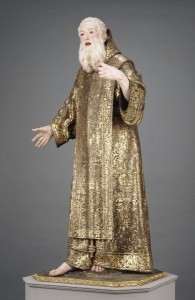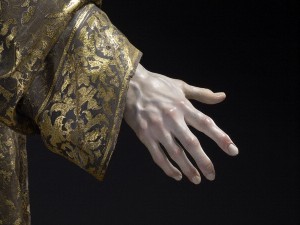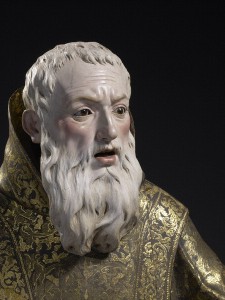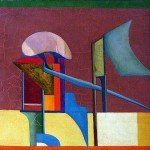Saint Ginés is life size with glass eyes that were probably made in Venice for human use, and is dressed in a splendid, gilded cope representing embroidery with gold thread. The carving and decoration is so fine that every vein in his hands is visible and the paintwork is fully intact. In the candlelight of a church this might be mistaken for the living saint.

He was carved by Luisa Roldán (1652–1706), known as La Roldana, who was named sculptor to the royal chamber at the court of Charles II of Spain in 1692. The statue was painted by her brother-in-law and was probably a royal commission. The first woman recorded as a sculptor in Spain came from a family of sculptors, which was a fairly usual background for the very few women who became professional artists in the 17th century.

Louisa’s father, Pedro Roldán, worked in a circle of artists in Seville that included Murillo and Valdés Leal, all three of whom were involved in establishing Spain’s first drawing academy. Murillo was a particular influence on Louisaa.

The statue of Saint Ginés de La Jara is the centerpiece of a small, didactic exhibition that explores the diverse crafts that went into its making and situates the artist: La Roldána’s Saint Ginés: the Making of a Polychrome Sculpture is at the J. Paul Getty Museum through 2009. When I was there in February visitors paid close attention to the tools and the short videos showing the recreation of various stages of the statue’s manufacture; I suspect many have personal experience in some aspect of the process which included carving, assembling the pieces of wood (the statue was made in sections), sizing, gessoing, gilding (as well as the specific process used on the saint’s robe of covering the gold with paint which was selectively scraped off), punchwork in the gilding, painting as well as preparation of the paints. Although we now have pre-mixed paints and sandpaper rather than cuttlebone and sharkskin, little else has changed. The process can be seen on the website.
The Getty has created a wonderfully focused exhibition that brings attention to a little-known artist and makes the practice of polychrome wooden sculpture particularly clear.







